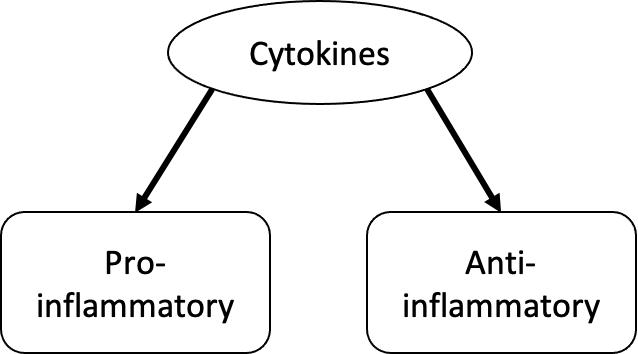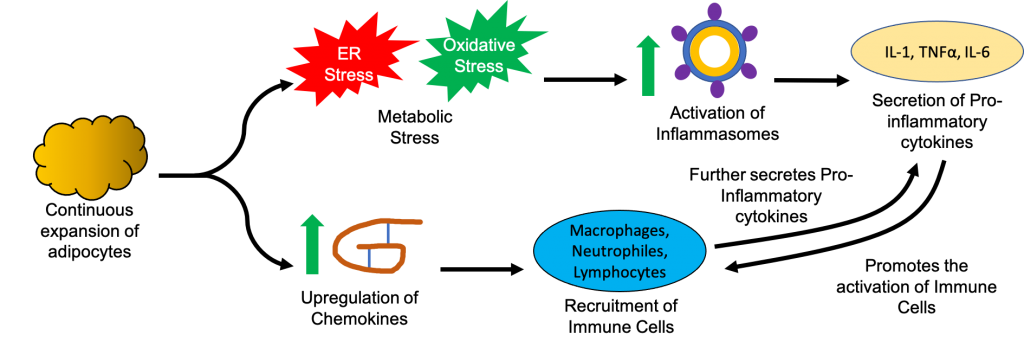Role of Adipose Tissue in Inflammation
A brief insight into the role of Adipose Tissue in the Inflammatory Response Pathway, with relation to obesity.
Adipose tissue does not only serve as connective tissue that stores excess calories in the form of triglyceride in white adipose tissue; however, it also serves as an endocrine gland by secreting adipokines, a family of hormones and cytokines that are classified as pro-inflammatory or anti-inflammatory (21).

There is a general sense that as the amount of adipose tissue increases, the secretion of pro-inflammatory adipokines and anti-inflammatory adipokines increases and decreases respectively. This further activates the inflammatory signaling pathway as the continuous expansion of adipose tissue will cause metabolic stress in the form oxidative and endoplasmic reticulum (ER) stress (21).
Oxidative stress occurs due to the increased metabolism that the body is undergoing and the inability of the body to dispose them at a sufficient rate. Reactive oxygen species are a byproduct of many metabolic pathways involved with processing the excess nutrients.
ER stress occurs in adipocytes during obesity due to the increased demand and rate of protein synthesis that is required to constantly process the prolonged nutrient overload (unfolded protein response).
As a result, oxidative and ER stress activates inflammasomes, which are multiprotein intracellular complexes that activates and secretes pro-inflammatory cytokines (4).
Adipocytes will also upregulate the expression of chemokines, which are cytokines that are considered pro-inflammatory as they recruit immune cells (4).
Immune cells also have the ability to secrete pro-inflammatory cytokines. This relationship, which can be seen via the double arrow, is important as it is the basis of chronic low-grade inflammation. Over time, there will be increasing concentrations of pro-inflammatory cytokines and immune cells which is essentially chronic low-grade inflammation.

Another cause that suggests why increased adipose tissue is accompanied by inflammation is the hypothesis that as adipose tissue increases, the ability to form new blood vessels within the adipose tissue cannot keep up. This results in the death of adipocytes due to hypoxia which can lead to oxidative stress. The death of adipocytes will result in the recruitment of white blood cells such as macrophages, neutrophils and lymphocytes (4).

Recent Comments